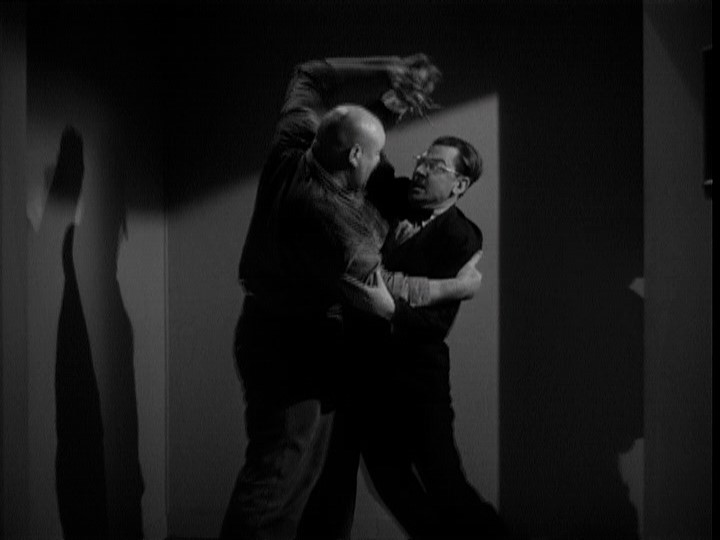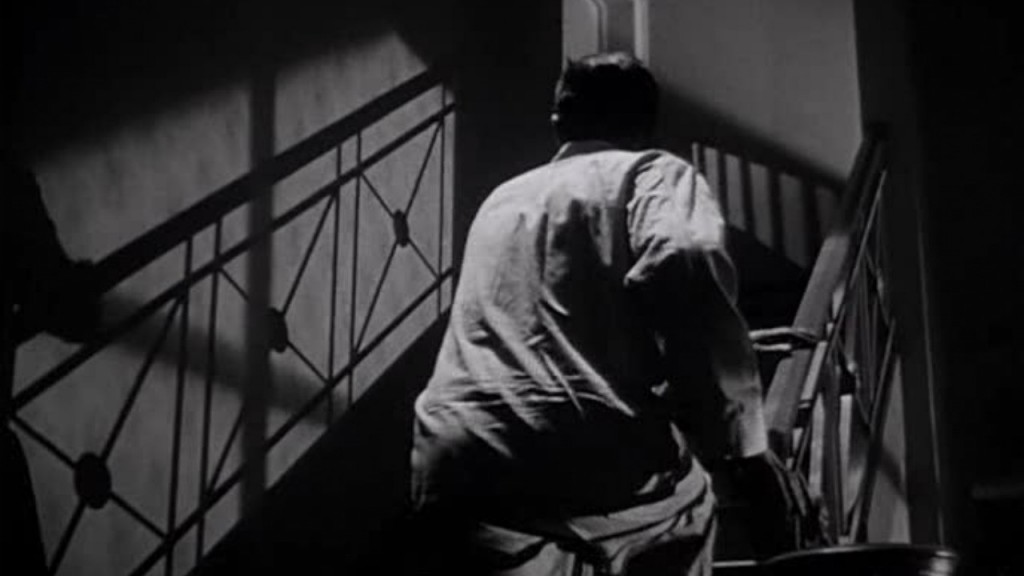Written by Eugene Ling and Malvin Wald
Directed by Budd Boetticher
U.S.A., 1948
When newspaper reporter Kathy Lawrence (Lucille Bremer) walks into private detective Ross Stewart’s (Richard Carlson) office, he thinks he’s just hit the jackpot seeing as she represents his first ever client. Little does he know that the investigation the alluring Ms. Lawrence needs assistance with will tax Ross of far more moral and psychological stamina than he could ever have bargained for. It seems Kathy has a lead as to where the recently convicted Judge Finlay Drake (Herbert Heyes) might have taken refuge from pursuing authorities: a mental institution. With a 10 thousand dollar reward promised to anyone who can help the police book the renegade judge, Ross accepts to play act as Kathy’s manic-depressive husband who needs time under doctoral supervision. Once instituted, Ross snoops about to learn whether or not Drake really is ensconced among the establishment’s patients. Not all of the folks working there look upon their tenants favourably however, something Ross quickly discovers in painful manner.
Behind Locked Doors, directed by Budd Boetticher, is, for all intents and purposes, a precursor to a much more widely known film from 1963, Sam Fuller’s Shock Corridor. Working on the same principle of a protagonist (in Fuller’s film the hero is the journalist rather than a private eye) that has himself admitted into the loony bin, Fuller’s motion picture has a very apt title given how the viewing experience is quite shocking at times. Fuller was a highly accomplished filmmaker, an auteur many would argue, something to which his predecessor Boetticher cannot stake a claim. Boetticher was more of a workmanlike storyteller, specifically in the 1950s as he churned out a series of low-budget westerns, a genre that was at the height of its popularity in Hollywood at the time. Like so many actors, writers and filmmakers, to get where he eventually landed, Boetticher started with a low budget thriller now lumped into the pseudo-genre known today as film noir.
That is not to say that Behind Locked Doors has nothing of value going for it just because its director was not one known for demonstrating much panache or idiosyncratic touches. Upon closer inspection, the film may even be described as bold in some respects, its plaguing issues mainly being that it never stops to take some of its potentially fascinating ingredients more seriously, preferring to utilize them more as plot points than for any satisfying thematic resonance. In essence, the movie has its protagonist spend most of the running time in a location the general public would rather keep out of sight and mind: an establishment for the mentally challenged. Mental handicap is, till this very day, a topic that easily crawls under people’s skin, something ordinary individuals do not understand, and because of that, find the issue uncomfortable. This movie throws the main character and the audience into the thick of it. Even in the early 21st century people still struggle to grapple with the illness, leading one to believe that its impact on audiences in 1948 was probably even greater.
For making the decision to set the film’s story within such confines, the director and his screenwriting duo of Eugene Ling and Malvin Wald should be applauded. The problem, so to speak, is that they fail to do much of any consequence with the setting. Truth be told, the movie could have been set in a prison and it would have amounted to pretty much the same end product. Were the filmmakers unwilling to delve deeper into the topic due to fear that the public would shun their film out of ignorance? Did they themselves demonstrate ignorance in believing that they were being accurate in their patently safe and simplistic depictions? The floor is open to debate, but is difficult not to wonder, at least a little bit, what the movie could have been and more time been taken in establishing who some of the inmates are. There are some potentially interesting characters, yet the film is so dead set on solving its mystery, a mystery to which the answers are not at all difficult to guess, that said side characters end up being little more than decorative instruments that occasionally erupt in fits of lunacy.
Adding to the disappointment are the antagonists, all of which are either lack gusto, fuller characterization, or are just stereotypically evil. The biggest culprit is undoubtedly Douglas Fowley as Larson, one of the two resident employees that tend to basic patient needs and get the latter participating in some of the work that needs to be done around the building. It isn’t that Fowley is a poor actor, but rather the script does him no favours by painting him as an appallingly evil, sneering overseer. He relishes each and every opportunity to physical harass the patients, frequently threatening anyone who irks him for the most mundane reasons. Countless films set in hospitals and prisons have featured the ‘bad nurse’ or the ‘bad prison guard’. Behind Locked Doors clearly presents one of the earliest incarnations of such a pedestrian representation. Case in point, earlier interpretation does not automatically equate to superior quality.
On the flip side, Richard Carlson and Lucille Bremer are excellent co-leads, each of their scenes sparkling with wit and personality. Carlson plays Ross with flavour, injecting an impressive amount of confidence and charisma into a character that is trying his hand at the private eye game for the first time. Bremer matches him every step of the way, virtually outwitting him as he flaunts his desire to kiss her or ask her out. As the danger grows more pronounced, so too do their respective performances dial down the amusement factor and turn up the seriousness. It is almost a shame that Bremer is not pretending to be an inmate herself because her absence outside of visiting hours is sorely missed. The duo admirably plays its part in making up for the lackluster villains of the piece.
Lastly, despite that director Boetticher never went down as one of the studio systems great directors, his work in Behind Locked Doors, aided in no small part by cinematographer Guy Roe, is very evocative overall. While daytime scenes lack any distinct quality to them, when the sun goes down and the light gets to play with the shadows, the film actually looks quite handsome. There are a few moments when the drama of silhouetted figures is employed to great effect, and the recurring shot of Ross looking up the staircase leading to where he believes the clandestine judge is located offers a nice visual interpretation of the proverbial mountain he must climb in order to achieve his goal and bank his share of the ten grand reward.
The film is uneven, hurt by its lack of desire to take greater advantage of its unique setting and a trio of poorly written evildoers. Conversely, the cinematography shakes proceedings up with stylish, moody moments and the two lead actors are impossible not to like. There is no reason for Behind Locked Doors to be on a ‘must see’ list for those delving into cinema’s past, but those who choose to give it a spin won’t feel as though they’ve completed wasted their time either.
-Edgar Chaput




